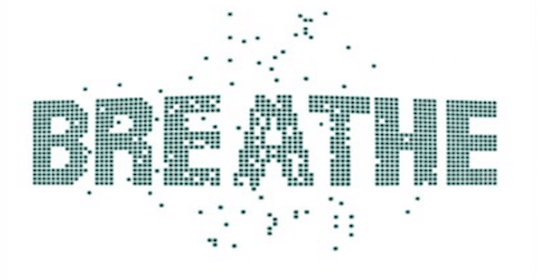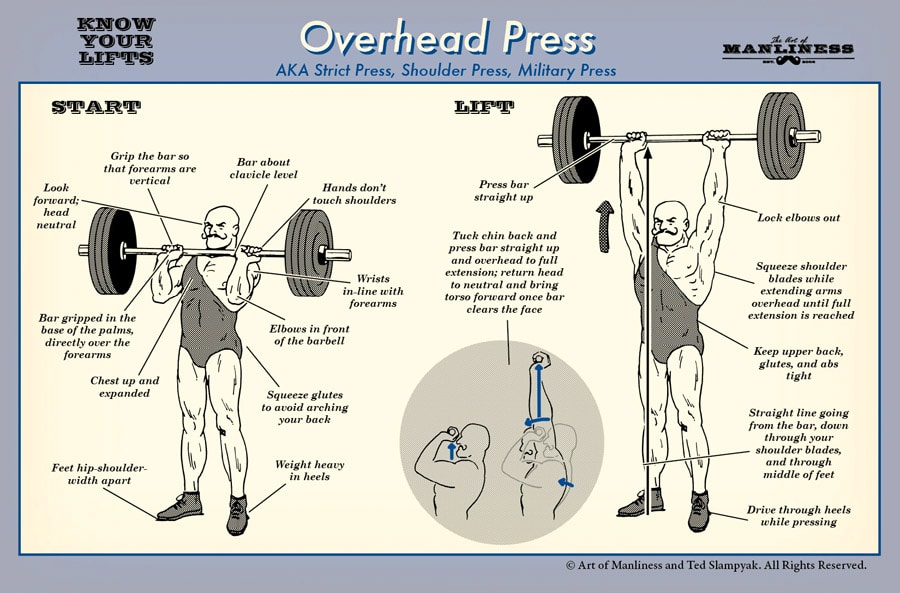
Whether you’re answering hard questions, making impromptu remarks, analyzing a situation, or synthesizing a bunch of data points into a cohesive and convincing presentation, the ability to think and process multiple pieces of information quickly and effectively is a vital skill to have. In our fast-paced and fluid world, you’ve got to be able to pull out the right piece of knowledge at the right time.
Your working memory is what allows you to do that.
While it was once thought that the capacity of each individual’s working memory was something they were simply born with, research from the worlds of cognitive science and psychology are showing that we can actually train it to become stronger and faster.
If you’re ready to upgrade your working memory from “six guinea pig power” to eight cylinder efficacy, today’s your lucky day. Below, we provide research-backed advice on how you can boost the potentiality of your working memory in order to become a master of cognition in even high-pressured situations.
What Is Working Memory and Why Is It Important?
Whenever we perform tasks that require reasoning, comprehension, and learning, we use our working memory. Our working memory allows us to hold relevant information in our brain while we do something else at the same time. It’s a short-term storage tank for thoughts and ideas that you can retrieve at the ready and process, manipulate, organize, and integrate in order to solve a problem, make a decision, find an explanation, reach a conclusion, or figure out possible moves. Think of it as your flexible mental scratch pad.
If you’re answering a question off the cuff, your working memory is what allows you to load what you want to say next into a cognitive queue while speaking at the same time.
Or let’s say you’re writing up a memo. You did your research and found some great information you’d like to include in a section that drives home the main point. However, you’re not quite ready to tackle that part yet, so you hold that section in your mind while you continue writing. That’s an example of your working memory in action.
When you read a book or an article, your working memory comes into play in a big way too. Reading comprehension requires you to remember bits of information that you read earlier and connect it to what you read later.
Working memory also plays a vital role in focus and attention. Not only does it allow us to store relevant information in our brain while we do something else, working memory also allows us to ignore irrelevant information, including distracting thoughts. As I discussed with Cal Newport in a podcast, the skill that’s becoming increasingly more rare in our knowledge-based economy, and consequently more valuable, is the ability to focus and immerse oneself in a task or project for long periods of time. Strengthening your working memory is a vital part of increasing your ability to perform this kind of “deep work.”
Not only does the ability to stay focused make us more productive, but research suggests that it also contributes to our overall happiness. A focused mind is a happy mind.
What’s more, some research suggests that working memory plays a role in overall fluid intelligence — the ability to solve problems by analyzing data and finding patterns and relationships between different elements. It should be noted, however, that the evidence for this connection is debatable, as there are other studies which show that working memory doesn’t impact fluid intelligence. Yet even if improving our working memory doesn’t directly make us “smarter,” as discussed above, it still plays a vital role in the effectiveness of our everyday mental functioning.
Working memory is particularly important for those with ADHD (which may be related to a deficiency in this capacity) and for the elderly (as it declines with age), but it’s a vital faculty for everyone who wants to perform at the peak of their cognitive powers.
But here’s the problem: in our rapidly changing, high-pressured, distracting world, our working memory gets taxed. We all suffer from information overload, with social media and newsfeed notifications soliciting our attention at all hours of the day and night. The brain has to labor mightily to figure out which of these information nuggets to hold onto and which to let go. Its capacity is constantly overburdened, and thus diminished in function. Anxiety and stress, caused by these relentless interruptions and otherwise, also reduce the amount of working memory we have available.
What then can be done to keep our working memory running on all cylinders?
We’ve all got two options. First, reduce anxiety, stress, interruptions, and information overload. Sound advice for improving one’s life on a variety of fronts; and I’ve got a whole guide here on how to effortlessly block distractions from your computer and phone.
But while we should all take strides to simplify, sometimes that’s not possible or even entirely desirable. We don’t get to decide when our boss needs a last minute report or when our kid needs to make a trip to the emergency room. And truth be told, most of us rather like the information smorgasbord spread before us online; sure, some of it is vapid and irrelevant, and should be passed over, but there’s plenty of incredibly interesting information out there to learn.
So that leaves us with the second option: boost and strengthen our working memory, so that we can handle whatever life throws at us with deft, sharp cognition.
Let’s take a look at how we can increase the expansiveness of our mental scratch pad so that there’s always plenty of room to store the scribblings so crucial for working effectively, and thinking well on our feet.
How to Train Your Working Memory
Play the right kind of brain-training games. In the past few years, brain-training games have proliferated, promising to make you smarter with just fifteen minutes of daily play.
But the research doesn’t back up the claims of the brain training companies. Instead of increasing your overall intelligence, playing these games just makes you better at those games. There’s no transfer to the real world.
However, one type of game has been shown over and over to improve working memory. It’s called the “dual n-back game” and it’s like putting your brain through the mental equivalent of a Chipper CrossFit WOD. In short, it’s brutal.
Actually playing the dual n-back game will give you the best idea of how it works, but here’s how science writer Dan Hurley describes it in his book Smarter:
“Imagine that you are listening to a string of letters spoken aloud. You are asked to press a button every time you hear the same letter repeated twice in a row. That’s 1-back. That’s easy. So if you hear the list n-a-m-m-a-m, you press the button when you hear the second m, right? But now let’s try 2-back: this time, you have to press the button when you hear the last letter in the series, because this last m was preceded two letters earlier (hence “2-back”) by another m. If you were being tested on 3-back, however, you would press the button when you heard the second a, because it was preceded three letters earlier by the first a. And so it goes, to 4-back, 5-back, and on.
What makes this task so difficult is that the list just keeps coming at you — not a short list of six letters, like the one I have presented as an example, but a list that continues, with another letter and another letter, for a minute and a half. So you are constantly updating and keeping track of the current sequence of two, three, four, or more letters, which is constantly changing as the next one is added. It requires total concentration. Let your mind drift for a moment and you’re lost.”
To make that already cognitively taxing task even harder, you make it dual n-back by adding another input you have to keep track of:
“as you hear this random sequence of letters, you also see a dot on your computer screen moving randomly among eight possible spots on the outer squares of a tic-tac-toe board. Now your mission is to keep track of both the letters and the dots as they just keep coming. So, for example, at the 3-back level, you would press one button on the keyboard if you recall that a spoken letter is the same one as was spoken three times ago, while simultaneously having to press another key if the dot on the screen is in the same place as it was three times ago.”
If you want to try this and see how hard it is, you can play it here online. Go ahead. I’ll wait.
Pretty tough, huh?
The dual n-back game is designed to severely tax your working memory. You have to keep track of multiple pieces of information while applying it at the same time, and it gets harder and harder as you get better at it. It’s Starting Strength for your working memory.
The effort pays off though: research suggests that the dual n-back game definitely increases working memory capacity. But here’s the catch: the improvements are transient and short lasting. While research participants were able to improve their working memory after 12-week programs of dual n-back training, once they stopped, the gains quickly went away. So working memory is just like your physical muscles in this way too: if you don’t use it, you lose it.
Thus if you want to increase your working memory capacity with dual n-back training, you have to commit to it for the long run. Most researchers recommend 25 minutes every day or every other day. Just as you set aside time to exercise your body, set aside some time to exercise your brain.
You can use the dual n-back site that I linked above for your training, or you can download one of the many dual n-back smartphone apps out there on the market. Just do a search for them.
Meditate. Meditation not only helps lower blood pressure and alleviate depression, it can also improve your working memory. One study found that after just eight days of mindfulness meditation training, students’ working memory improved significantly compared to students who didn’t take part in the training. Similar studies have found the same results. And the meditation sessions don’t have to be long to get the benefits. Eight minutes of daily meditation will do the trick.
Researchers hypothesize that mindfulness meditation improves working memory by strengthening the ability to stay focused on a single thought while ignoring other distracting thoughts. It also reduces the anxiety and stress that have been shown to deteriorate this cognitive capacity.
Getting started with meditation is easy. Read our primer on the subject and then start using a meditation app on a daily basis to keep yourself accountable. My favorites are Calm and Headspace.
Lift weights. Not only is strengthening your working memory similar to strengthening your physical muscles, but strengthening your physical muscles can actually strengthen your brain!
Teresa Liu-Ambrose has spent her career researching the connection between physical strength and mental strength, particularly in older individuals. Her research suggests that resistance-training programs can improve cognitive functions more than aerobic exercise. In one study, she found that elderly individuals who took part in regular resistance training improved more in attention and working memory than individuals who took part in regular aerobic training.
While it isn’t yet clear why resistance training benefits working memory, other studies have found the same connection. So start hoisting some barbells and dumbbells, and you’ll be improving both your brain and your brawn.
For those of you who are aerobically inclined, there are cognitive benefits that come with activities like running and swimming too; the research just suggests they’re not as potent as those which come from strength training. So along with your 5-mile runs, be sure you’re including some deadlifts and squats. High intensity exercise has been shown to boost working memory too, so throw some sprints in there as well.
Get plenty of sleep. Of the many benefits of getting a good night’s sleep, improvement in working memory is a big one. Researchers have found that individuals who get a full eight hours of sleep perform up to 58% better on working memory tasks than individuals who get less.
So to ensure that your working memory is performing at its maximal potential, start taking steps towards getting a better night’s sleep.
Your working memory is a key component of how well you think on your feet and how deftly your brain functions on a day-to-day basis. Maximize its potential by following these guidelines and you’ll be able to grapple with whatever scenarios come your way.
Listen to our podcast with memory champion Nelson Dellis about improving your memory:







